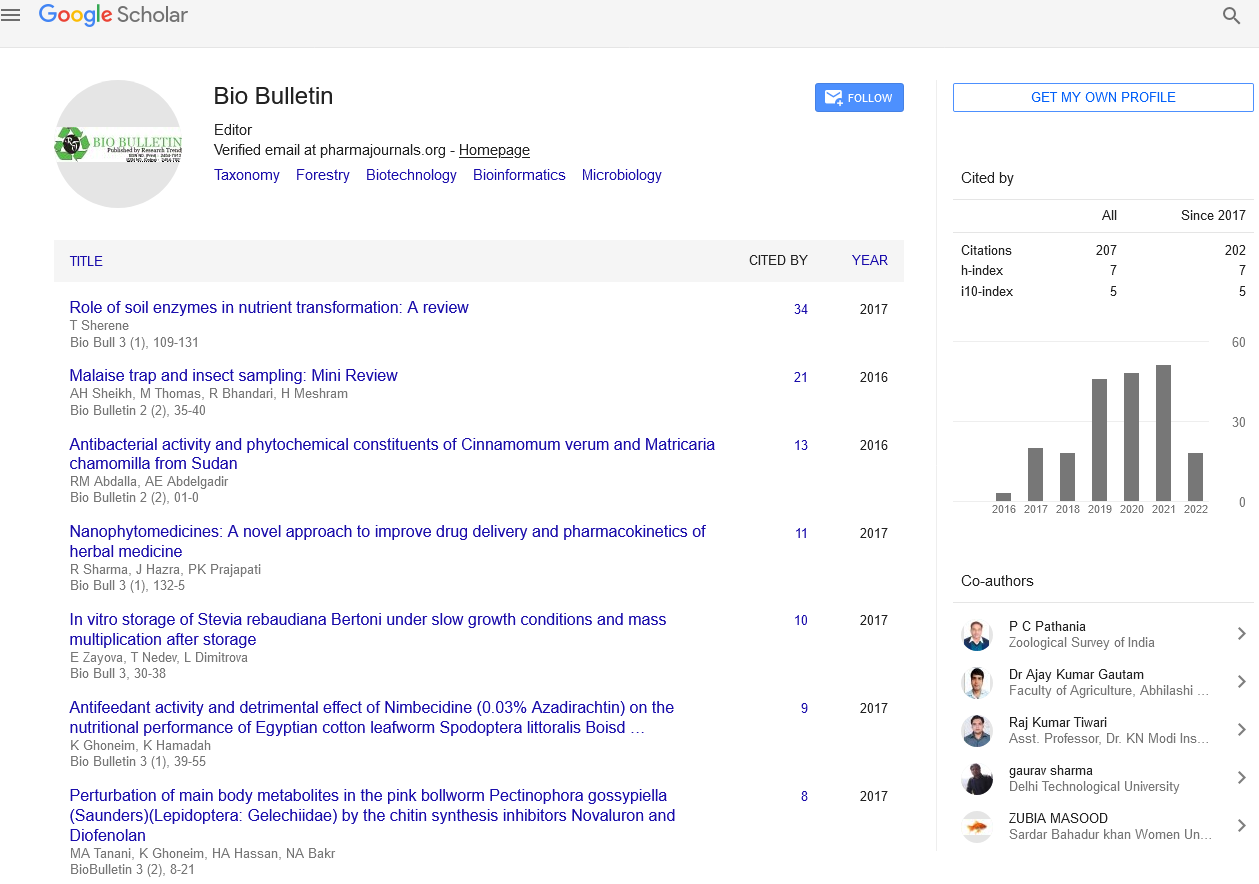Positive Transgressive Segregation in Intervarietal Crosses of Tobacco (Nicotiana tabacum L.) and their Micropropagation
Abstract
Author(s): Daniela Stoeva and Ely Zayova
Three advanced oriental tobacco (Nicotiana tabacum L.) lines, derived from cross between three commercial cultivars tobacco and selected by their positive transgressive traits, are described. Transgressive segregation by agronomically significant quantitative traits such as plant height, number of leaves, vegetation period (time to maturity) and yield/plant was observed. Content of nicotine, reducing sugars, and total nitrogen was determined in the leaves. Compared to the better parent, the yield per 1000 m2 exceeded over 18.92% (Line 44), 30.81% (Line 58/2) and 56.76% (Line 59), respectively. In field conditions, the all three lines presented combined disease resistances to Tobacco Mosaic Virus (TMV), black shank disease (Phitophtora parasitika var. nicotianae) and downy mildew (Peronospora tabacina). Based on these results, we inferred that the transgressive selection can be used for development of valuable lines of interest of tobacco breeding. An effective micropropagation protocol of the transgressive tobacco lines was developed. As initial explants were used in vitro 30 days germinated seedling. The highest propagation rate was recorded on MS medium containing 1.0 mg L-1 6-Benzylaminopurine (BAP) and 0.1 mg L-1 Indole-3-Acetic Acid (IAA) after three weeks of culture. The plants were successfully rooted in ½ MS medium containing 0.1 mg L-1 Indole-3-Butyric Acid (IBA). The developed efficient simple protocol in the study could be used for obtaining of plants for breeding programs of N. tabacum. The studied lines may be released as new varieties or used to produce improved tobacco hybrids.
Haberler
Haberler
Haberler
Haberler
Haberler
Haberler
Haberler
Haberler
Haberler
Haberler
Haberler
Haberler
Haberler
Haberler
Haberler
Haberler
Haberler
Haberler
Haberler
Haberler
Haberler
Haberler
Haberler
Haberler
Haberler
Haberler
Haberler
Haberler
Haberler
Haberler
Haberler
Haberler
Haberler
Haberler
Haberler
Haberler
Haberler
Haberler
Haberler
Haberler
Haberler
Haberler
Haberler
Haberler
Haberler
Haberler
Haberler
Haberler
Haberler
Haberler
Share this article

